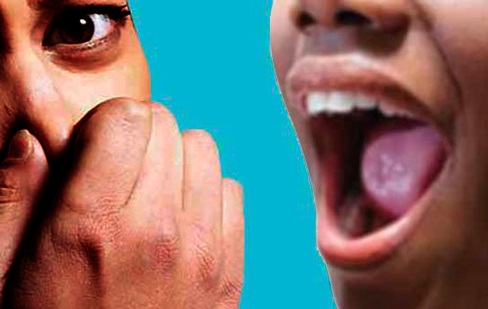
Halitosis affects self-confidence, social life
Halitosis is the medical name for chronic bad breath or oral malodour. Defined blatantly, halitosis means chronic offensive or unpleasant mouth odour.
It is a common but treatable condition, so a person suffering from bad breath should not feel reluctant to see a dentist.
Advertisement
Admittedly, the effects of an overly offensive mouth odour can be embarrassing and demoralising, leading to low self-confidence and uncomfortable social life.
Halitosis can, therefore, affect marital and other intimate relationships as some people find it difficult to sit close to a person who has an offensive mouth odour. Globally, halitosis is estimated to affect one in four people.
Diagnosis
Both the individual and the dentist can diagnose halitosis. However, it is often difficult for the individual to tell that he or she has halitosis.
Even that, a person can diagnose him or herself in several ways. One of the methods is to ask close friends and relatives whether or not your mouth smells badly.
This is because a person gets used to his or her own breath and may not be aware of the halitosis.
A second opinion on your mouth odour is, therefore, key. Another method is to use a home testing kit, which can be bought on the pharmaceutical market.
The kit comes in the form of strips that change colour in the mouth depicting halitosis due to the presence of large amounts of bacteria in the mouth.
One can also use the wrist test to self-diagnose halitosis. Since the wrist and the back of the palm do not usually touch surfaces, the individual can lick the wrist and the back of the palm, wait for about 10 seconds, and smell the licked spot.
The presence of halitosis would leave the licked spot smelling offensively.
Apart from self-diagnosis, dentists can also use a device called halimeter to measure the level of volatile sulphur compounds in the mouth.
Halimeter was introduced in the 1990s as an adjunct method of diagnosing halitosis alongside the human assessment methods.
Also, a person with constant stale taste and with white coating on the tongue may be suffering from halitosis or chronic bad breath.
Causes
Halitosis can be caused by a plethora of factors including but not limited to poor oral hygiene habits, existence of cavities, gum disease, cracked fillings and unclean dentures.
Dietary factors such as high protein, low carbohydrates, acidic foods, sweets, onions, coffee, alcohol and garlic as well as tobacco also contribute largely to halitosis.
Let me clarify that the dietary factors may not necessarily cause bad breath. Rather, poor digestion, constipation or bowel disorders can often cause the scent of food recently eaten to resurface in the mouth and cause bad breath.
Sometimes, other disease conditions such as sinusitis, diabetes, cancers, liver failure, chronic acid reflux, kidney problems and xerostomia (dry mouth) can cause bad breath. Accordingly, bad breath is equally a precursor to the presence of underlying health problems.
However, some people are overanxious about halitosis even though they may have little or no mouth odour at all.
This over concern for bad breath is termed as halitophobia (fear of halitosis). Halitophobia can lead to an obsessive mouth-cleansing behaviour.
Treatment
Most cases of halitosis originate from the mouth, hence everyone must be mindful of his or her toothbrushing and mouth rinsing techniques.
Both teeth and tongues must be brushed thoroughly in the morning and the last thing before going to bed at night.
One may refer to my earlier article on the relevance of bedtime toothbrushing for further education. It was published on page 13 of the April 27, 2022 edition of the Daily Graphic.
Large bacteria often accumulate on the tongue and in-between the teeth, causing bad breath. Apart from toothbrushing and rinsing the mouth, dental flossing is equally necessary.
A dental floss is a cord of thin filaments used for interdental cleansing to remove food particles and plaques in-between the teeth.
It removes particles that the toothbrush cannot remove, hence flossing helps largely to maintain oral health.
A person who does not see any improvement in bad breath must necessarily seek solution from a qualified and registered dentist or dental surgeon.
There should be no embarrassment in seeking for medical help to address halitosis. Remember that a bad breath that does not go away even with brushing, flossing and rinsing (chronic halitosis) might be due to an underlying health problem.
Treatment
The first step towards treatment of halitosis is to know and accept that you have bad breath.
Generally, good oral hygiene can minimise or gradually eradicate halitosis, provided that its occurrence is not attributable to an underlying health condition.
Dental checkups for scaling and polishing (cleaning) as well as for filling of cavities are sure ways of overcoming halitosis. Gum diseases will also be cured with regular dental checkups and oral hygiene.
Conclusion
General personal hygiene, including oral hygiene, is a prerequisite to preventing many disease conditions from occurring.
Normally, a self-conscious person who has bad breath would feel uncomfortable and embarrassed, especially when speaking in a group.
Perhaps the outbreak of COVID-19 and its resultant wearing of facemasks has saved many people living with halitosis from embarrassment.
However, masks may not be worn forever so it is good to take oral hygiene seriously. At least knowing the cause of halitosis helps to treat it better.
The writer is a Health service administrator. Email: [email protected]



